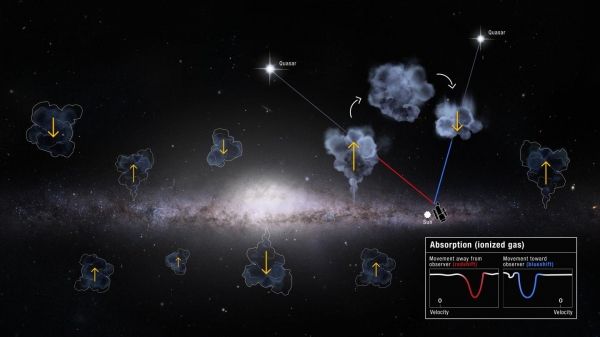Our Milky Way is a frugal galaxy. Supernovas and violent stellar winds blow gas out of the galactic disk, but that gas falls back onto the galaxy to form new generations of stars. In an ambitious effort to conduct a full accounting of this recycling process, astronomers were surprised to find a surplus of incoming gas.
"We expected to find the Milky Way's books balanced, with an equilibrium of gas inflow and outflow, but 10 years of Hubble ultraviolet data has shown there is more coming in than going out," said astronomer Andrew Fox of the Space Telescope Science Institute, Baltimore, Maryland, lead author of the study to be published in The Astrophysical Journal.
Fox said that, for now, the source of the excess inflowing gas remains a mystery.
Read more at: NASA/Goddard Space Flight Center
This illustration envisions the Milky Way galaxy's gas recycling above and below its stellar disk. Hubble observes the invisible gas clouds rising and falling with its sensitive Cosmic Origins Spectrograph (COS) instrument. The spectroscopic signature of the light from background quasars shining through the clouds gives information about their motion. Quasar light is redshifted in clouds shooting up and away from the galactic plane, while quasar light passing through gas falling back down appears blueshifted. This differentiation allows Hubble to conduct an accurate audit of the outflowing and inflowing gas in the Milky Way's busy halo -- revealing an unexpected and so-far unexplained surplus of inflowing gas. (Photo Credit: NASA, ESA and D. Player (STScI))


